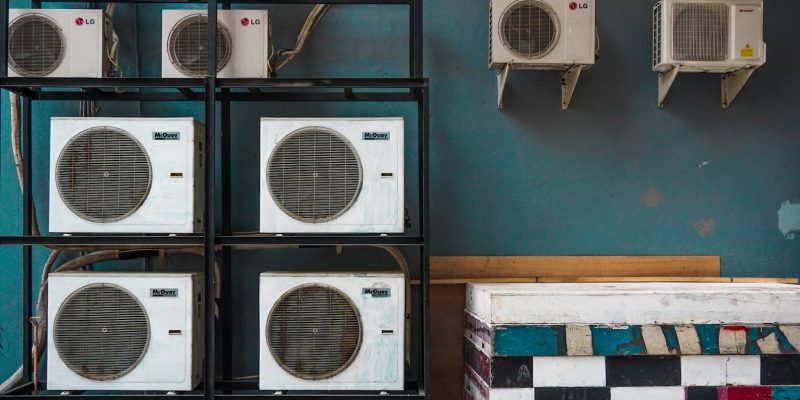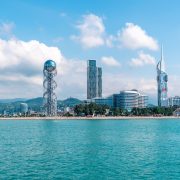As temperatures begin to cool off, HVAC contractors will obviously become more in-demand. If you are thinking about purchasing a new system this fall, here are a few key things you need to remember when making this decision.
The Best Heating and Cooling Systems for Winter
Size matters when it comes to cooling and heating your home efficiently. A system that’s too big will consume too much energy, leading to higher utility bills; too small may struggle to deliver necessary cooling capacity or may fail quickly. A manual J calculation performed by an HVAC specialist is the ideal way of determining its correct size.
Calculations can be complex and require many variables, including square footage and layout as well as the number of windows and insulation in a house, number of insulation layers and total load – which refers to how much heating or cooling power will be necessary to keep temperatures comfortable in each location. Climate may also play a significant factor as warmer or colder climates will alter how effective an AC performs in any given region.
When choosing an HVAC unit, always opt for one with the highest energy-saving efficiency possible within your budget. A high-efficiency unit will save money in the long run by using less energy and keeping your home cooler. In addition, this AC reduces carbon emissions as well as keeping costs down.
Having HVAC installed is one of the most vital investments you’ll make for your home, so choosing one of appropriate size and efficiency is vital for long-term comfort. So having your system professionally serviced prior to winter begins will help prevent problems and ensure full efficiency.
If you’re ready to start the process of purchasing an HVAC unit, consult a local dealer. They can assist in selecting an air conditioning unit that best meets your needs according to price, efficiency level, noise level and more. Be it home or business-based solutions; split system air conditioners will offer accurate BTU measurements based on square footage measurements for split systems.
An efficient HVAC system can save money on energy costs while simultaneously reducing carbon emissions and being better for the environment. Finding an appropriate model may seem difficult with all the options on the market; but with proper guidance you can quickly locate one suitable to your individual needs.
Schedule a tune-up now to ensure that your HVAC system is ready for colder weather by scheduling one. A qualified expert will run tests on your heater unit and identify any minor problems before they become more serious issues. Plus, NATE-certified technicians will make any necessary adjustments that improve its performance!
If your system is old and ineffective, it may be time for an upgrade. An outdated unit wastes energy while having to work harder than its more efficient counterpart. Also keep in mind that older systems often contain leaks which cause irreparable damage in their vicinity.
Your choice of heating system can also impact its energy consumption. A traditional electric furnace works like a hairdryer, warming air with electrical heating elements. However, heat pumps function more like refrigerators. They pull air in from outside before warming it before circulating it through your house.
Insulation of your home or commercial building should also be an essential consideration. The more insulated it is, the less energy your HVAC system will use – according to this website. You can make small improvements by making sure all doors and windows are tightly sealed; adding curtains or insulation as additional measures against heat loss; or installing solar-thermal panels to trap heat indoors.
Finally, select an HVAC system compatible with a programmable thermostat for maximum flexibility and savings on both energy costs and system life expectancy. With remote access control capabilities and automatic shut off features available on certain models, programmable thermostats provide you with added control and convenience of operation – saving both money on energy bills as well as prolonging its longevity!
Reverse Cycle Air Conditioning
Reverse cycle air conditioners use refrigeration cycles to draw heat from outside and warm your home. A condenser unit is installed outside, while an indoor head unit connects directly to your wall – with refrigerant continually changing from liquid form into gas state as it passes between these units.
When your air conditioning unit is functioning as a heater, a compressor and evaporator work to move refrigerant between liquid and gas states to generate heat that transfers from inside your house and back out again through its liquid state evaporator.
Once complete, this process repeats itself until your refrigerant returns into liquid state for use again – warming your house in turn! Eventually though, back to liquid state is reached through another cycle as this cycle begins all over again.
Your reverse cycle air conditioning will perform best when installed correctly, as this will ensure it is sized appropriately to heat and cool your home. An aircon that is too large will use too much energy, while one too small could be wasteful.
Reverse cycle air conditioners (www.choice.com.au/air-conditioners) that function in heating mode use cold liquid (refrigerant) that passes through an external coil to absorb heat from outdoor air and transfer it inside via a compressor, before fans distribute warm air around your home.
Many ducted reverse cycle systems come equipped with an air-purifying filter to help improve the quality of indoor air, offering relief to allergy sufferers as well as eliminating unpleasant odours and germs from entering your home. This can also help eliminate unpleasant smells while eliminating germ spread.
Heating through solar energy is much more energy-efficient than creating heat through combustion, such as burning coal and oil for combustion. Furthermore, solar thermal produces less carbon dioxide emissions as well as other greenhouse gasses than traditional methods.
Reverse cycle heating systems not only heat your home but can also purify the air. Many units feature built-in filters that trap dust and other microscopic particles – perfect for allergy sufferers! On top of that, no smoke or harmful chemicals are produced, making these units much safer than traditional fireplaces or portable heaters which pose potential safety threats to children who could accidentally burn themselves accidentally.





















